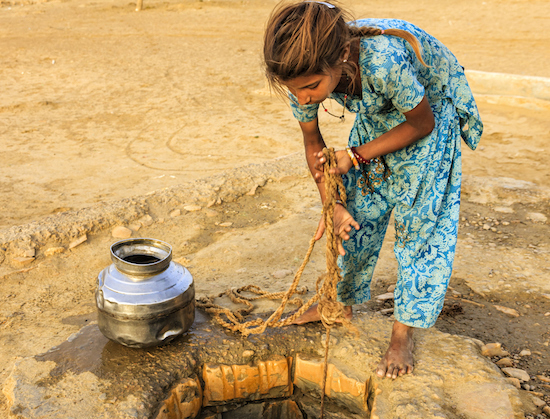This summer will be remembered for its scorching heat wave across the globe, and 2018 is shaping up to be the fourth warmest year on record. In Europe water companies have publicly called on or imposed temporary bans on hosepipe water to restrict unnecessary use of the precious resource. Further south, Cape Town was shaken by the threat of ‘Day Zero’ – when all taps would run out of water – with the government rationing water use to 50 litres per person a day (compared to 375 litres for an average U.S. citizen). Fourteen out of the world’s 20 megacities are now experiencing water scarcity or drought conditions. On the other hand, floods are also happening more frequently, with devastating effects on people’s lives, livelihoods, and the economy.
There is an intricate connection between population and economic growth to climate change that causes these extreme weather events. However, companies have direct influence on how they impact and interact with water as a shared, scarce resource. Is the company withdrawing water from a water-stressed source, escalating its depletion? Does it know which suppliers cause most significant water-related impacts in its value chain? Is it aware of the opportunities it can leverage to mitigate water-related risks?
In response to the water crisis and the global agenda for sustainable development set by the United Nations, GRI set out to provide a standard to help companies understand how they interact with water, their impacts on the environment and the communities, and what they can do to avoid ‘Day Zero’ at their own facilities.
In 2017, GRI convened a multi-stakeholder working group comprised of leading experts and practitioners on water stewardship from around the world, to revise its GRI 303: Water reporting Standard. Governed by GRI’s transparent and inclusive due process, experts from the World Resources Institute, the Pacific Institute, CDP, WWF, Ceres, International Union for Conservation of Nature, as well as mining, beverage and textile industries, put their heads together for over a year to par the latest advancements in water stewardship with corporate reporting on water.
The result, GRI 303: Water and Effluents reporting standard, provides a comprehensive and concise framework for collecting and communicating information about an organization’s water use, the associated impacts, and how it addresses them.
The standard allows companies to measure and communicate on the following:
- Key interactions with water across the value chain, from withdrawal, to consumption and discharge – impacts that have been consistently underreported. The standard also includes recommendations to report information about water use in the supply chain, to encourage companies to set up management systems to meet the requirements.
- How water is managed as a shared resource and how impacts are managed at a local level. The amount of water withdrawn and consumed by an organization and the quality of its discharges can impact the functioning of ecosystems. These impacts can have wider social and economic consequences for local communities.
- Impacts in areas with water stress, to help organizations prioritize action in the most sensitive locations.
- Water consumption, to measure water that is no longer available for use by ecosystems or local communities.
- Water discharge information, including the quality of water discharges, substances of concern present in effluents, and the approach to setting the minimum standards for the quality of effluent discharges.
- Facility level information for water withdrawal and water consumption.
Having worked closely with businesses in creating this standard, we know that companies want to be part of the solution. Clean water is essential for all life, and the lack of it affects individuals, communities and businesses alike. By using the latest methodology for measuring their impacts on this precious resource, companies are able to speed up their contribution to addressing the global water crisis. It is time to move from Day Zero to Day One of creating positive change.
To download the GRI 303: Water and Effluents 2018, click here.
GRI will be speaking at the CEO Water Mandate’s session “Towards a Common Understanding of Challenges, Risks, and Response” at the World Water Week on 28 August.
